Next Adventure Loading
Adventures
Introduction
Adventure #1: Identify and Understand the Problem
Adventure #2: Imagining Ideas to Solve the Problem
Adventure #3: Designing an Inventive Solution
Adventure #4: Building the Prototype
Adventure #5: Testing and Revising the Prototype
Adventure #6: Communicating Your Process
Curiosity Creek
Welcome to Adventure #5!
In this adventure, you will learn:
- How to test your invention prototype for feedback, and
- How to find ways to improve your prototype based on feedback and other information sources.
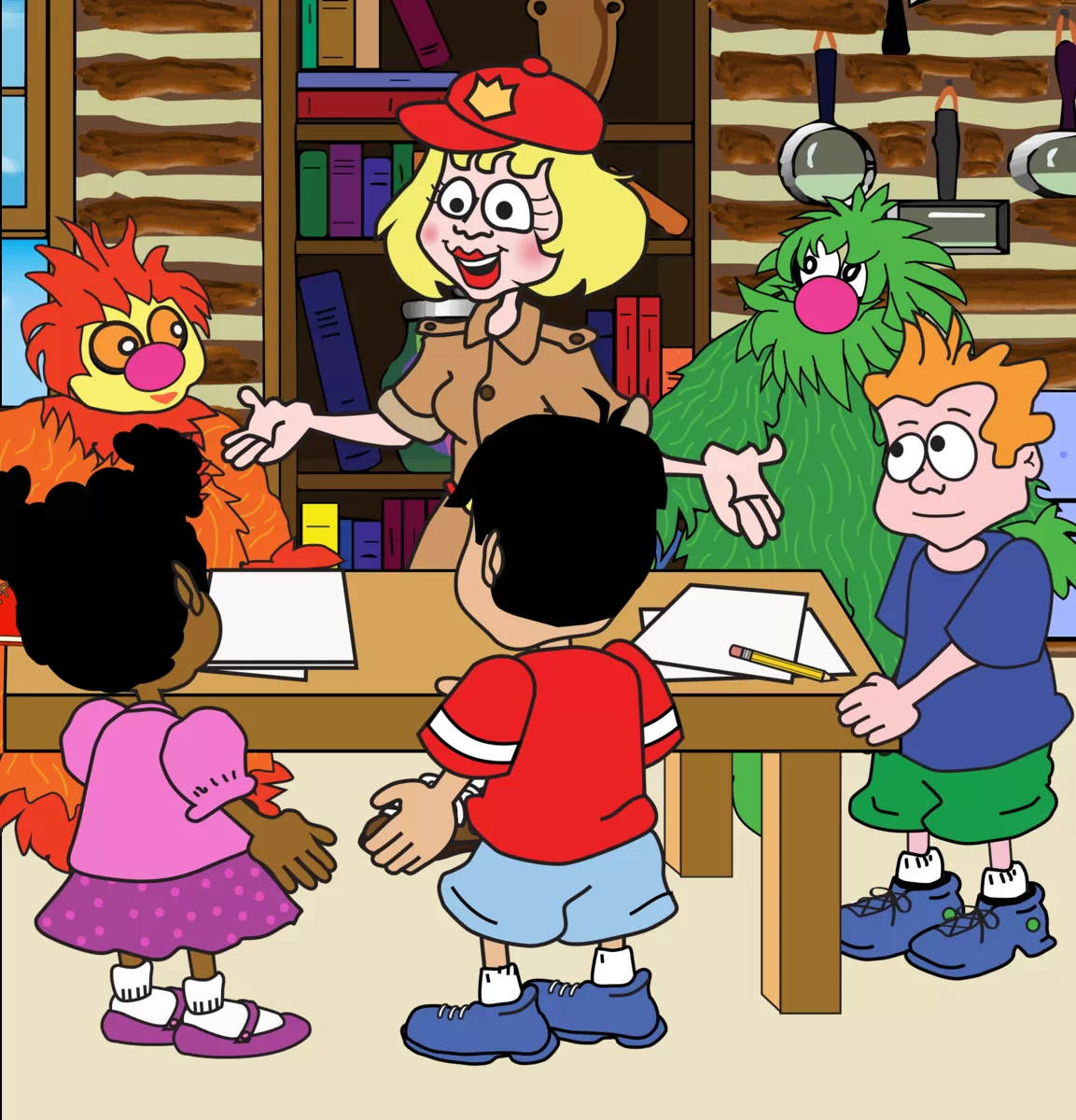
The Curious Kids have been hard at work building their prototypes and now have something that is ready for testing and feedback from other people!
Mimi says to the kids, “Now that we have your prototypes built, we can test them in the real-life environments of the creek. The invention process is all about building, testing, and improving again and again to create the best solution to make something better.”
Chen asks, “What kind of things should we even be looking for in testing? Anything and everything?”
Mimi replies, “Great question, Chen! We want to be looking for insights that people have that fall within 3 main categories: what’s working well, what isn’t working well that can be improved, and what are some new ideas that would make our invention even better? This helps you have a full picture of how successful your prototype is and where it can be improved.”
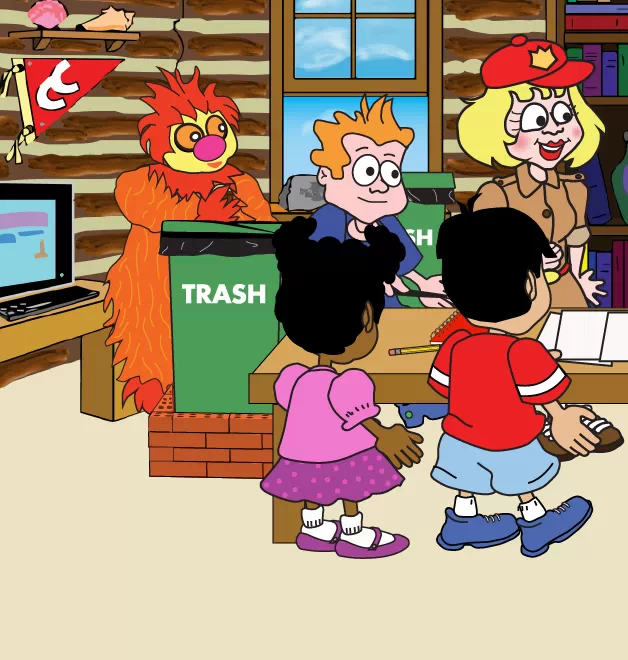
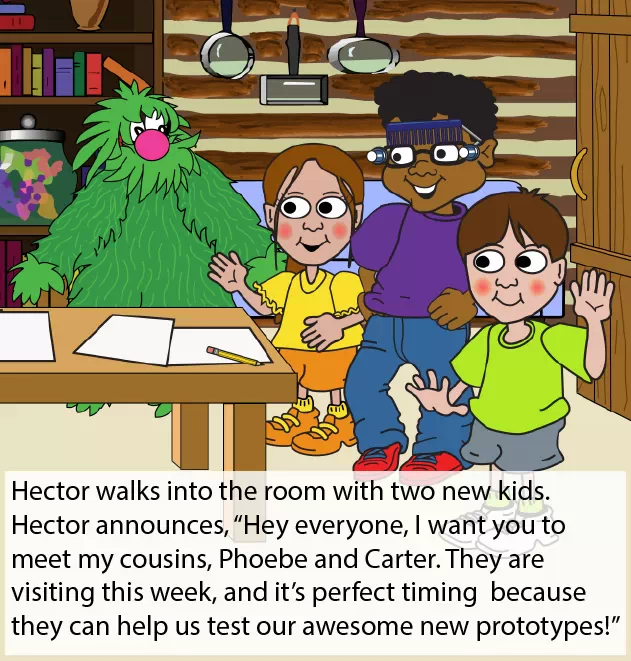
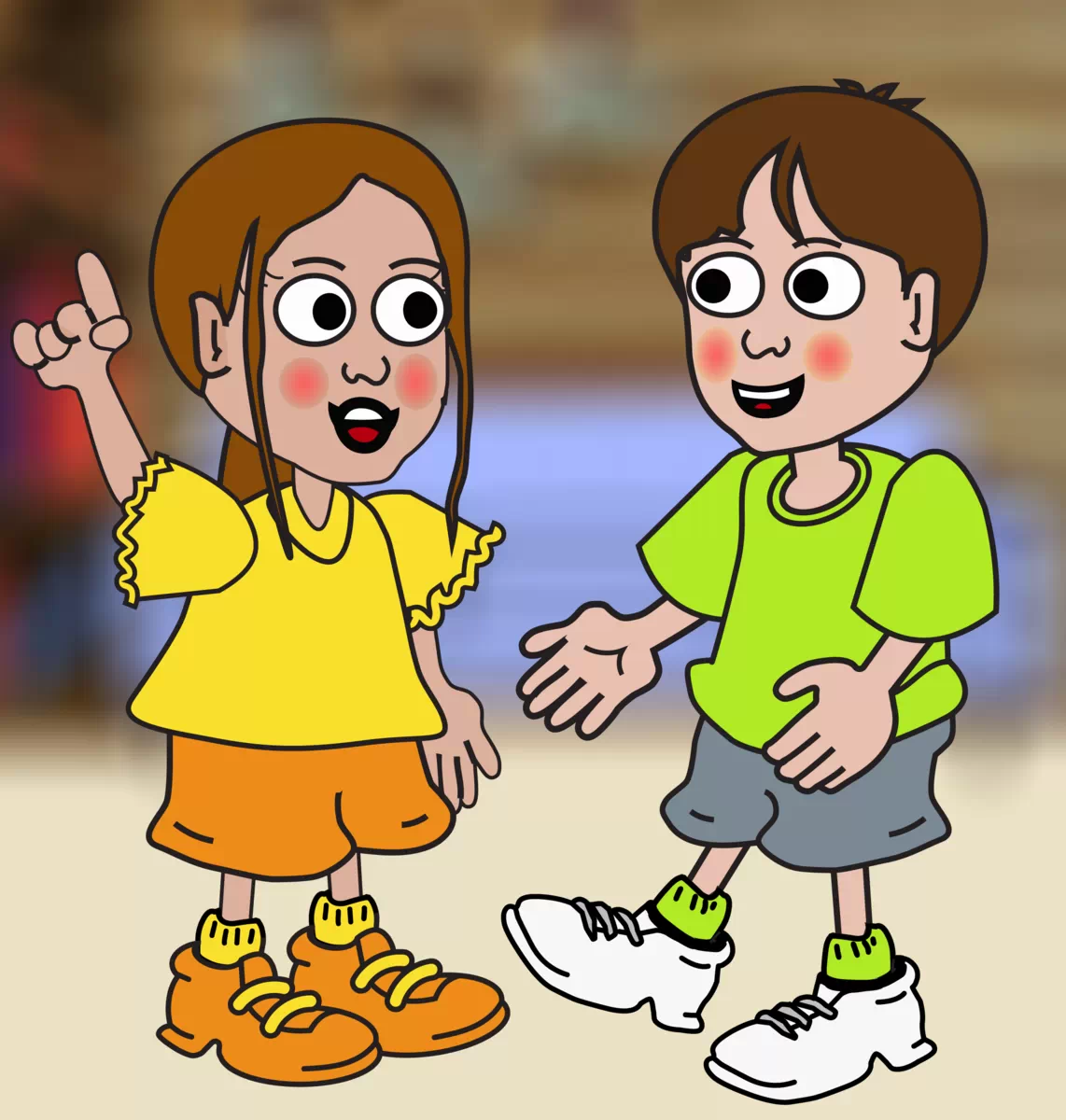
Phoebe says, “Hi Everyone! Hector told us about your inventions. I love to invent things, too! Maybe we could help you solve the fish’s burping problem.”
Carter says, “Me too! I want to help the fish, too.”
Phoebe asks the group, “Can you tell us about your inventions?”
Each group briefly explains and shows the prototypes they have built to Phoebe and Carter.

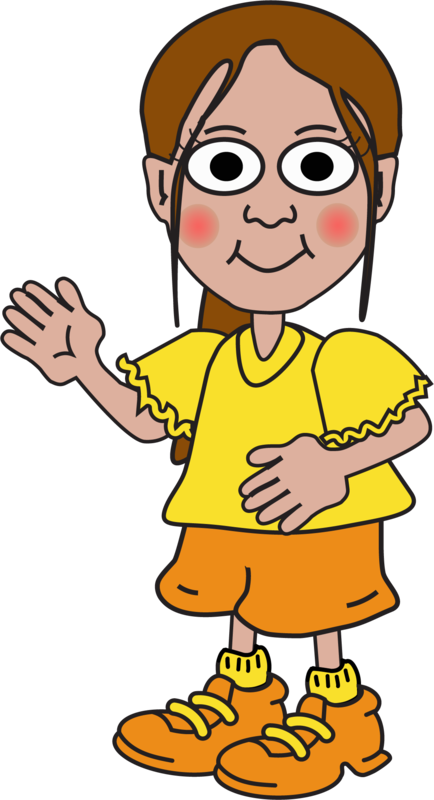 Phoebe says, “We would love to help test your prototypes. It would be so much fun!”
Phoebe says, “We would love to help test your prototypes. It would be so much fun!”
Carter adds, “I can’t wait! Let’s get started!”
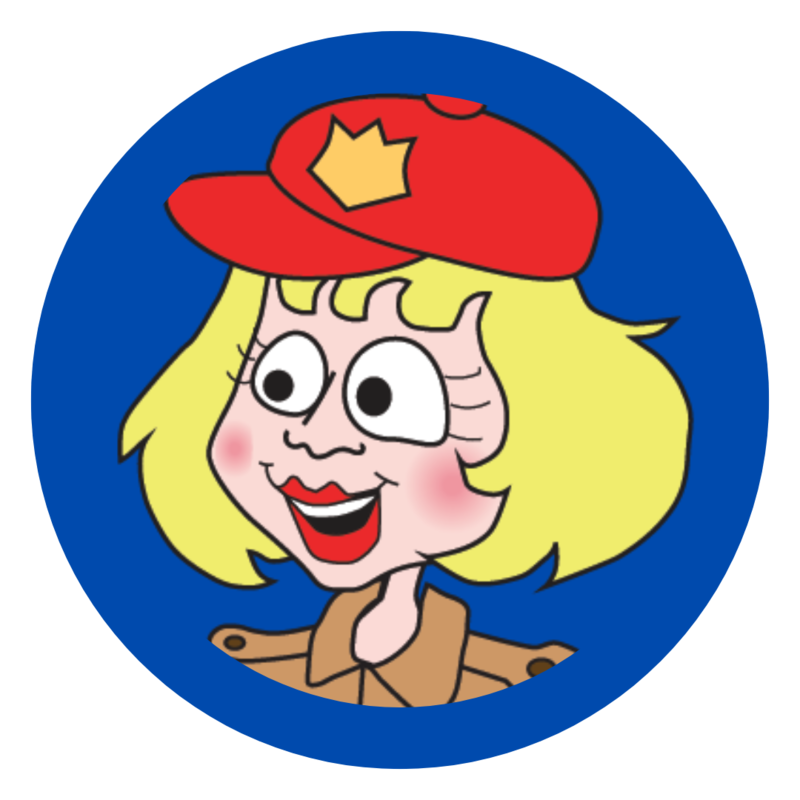 Mimi gathers the group and says,
Mimi gathers the group and says,
“Okay kids! Let’s get ready for some testing sessions with Phoebe, Carter, and other community members in Curiosity Creek. Go out and find both kids and adults who are willing to test your prototypes. Then, we’ll all meet back here in the Clubhouse to share what was learned. Make sure you write down all of the feedback in your notebooks.”
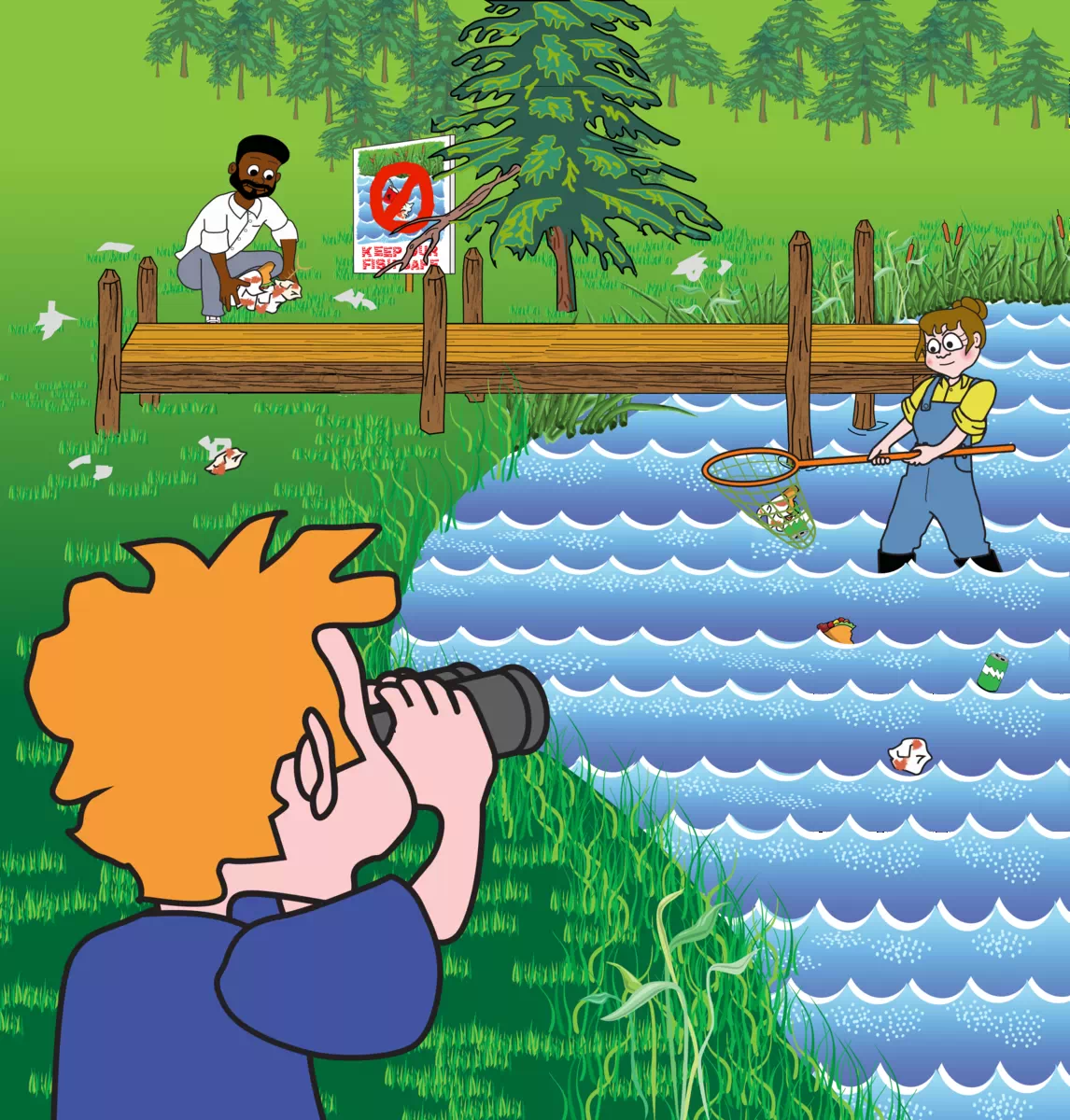
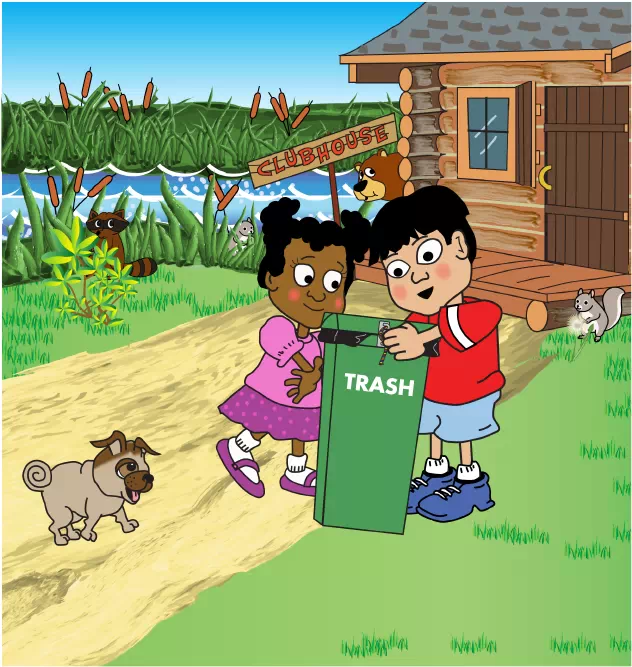
Tanisha, Chen, and Digger put their trash bin prototype outside after dinner and left it overnight to see how it worked.
Hector, Muff, and Scruff let Phoebe and Carter try to use their trash bin and share their feedback first. Then they tried it with others in the community.
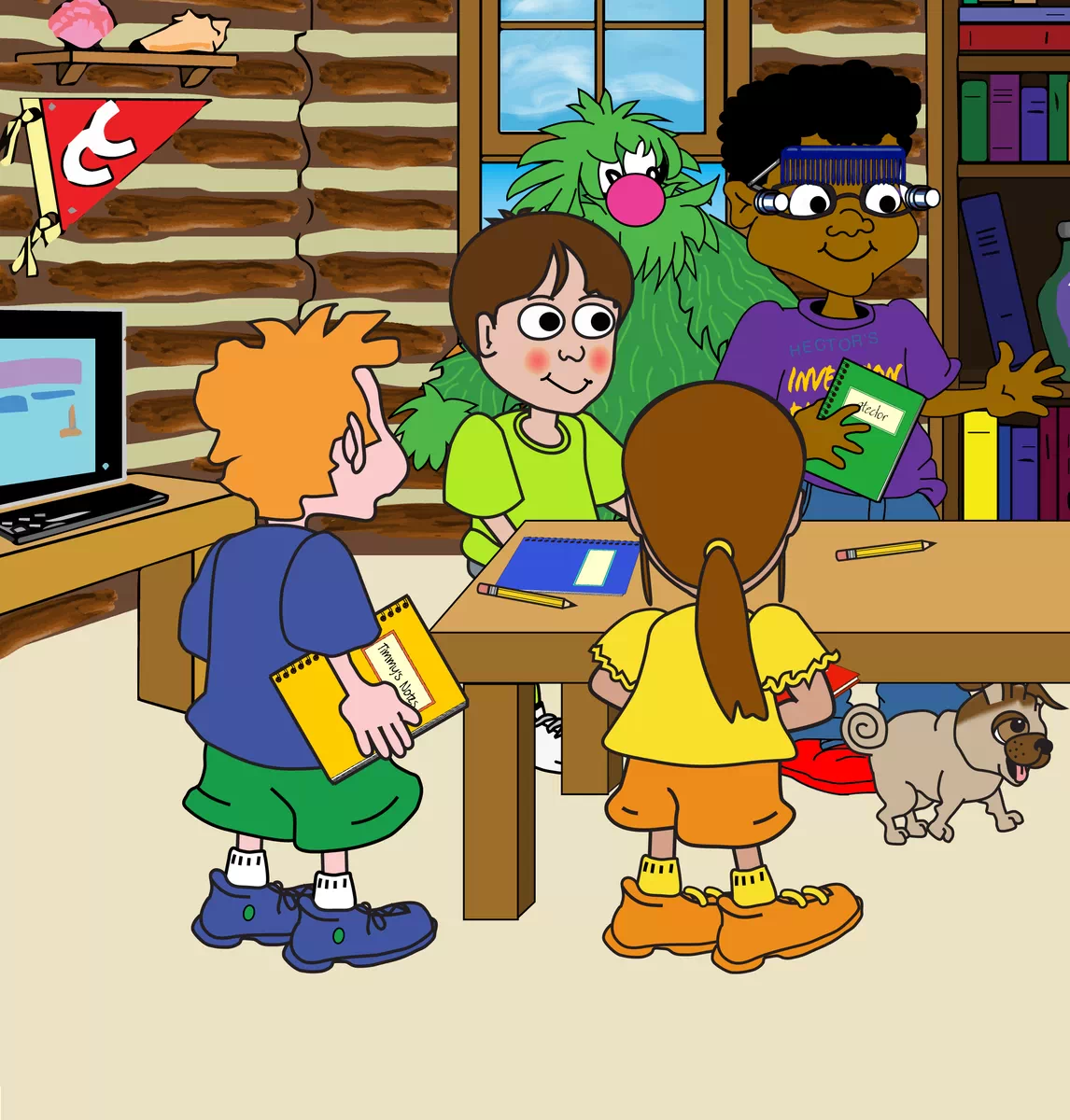
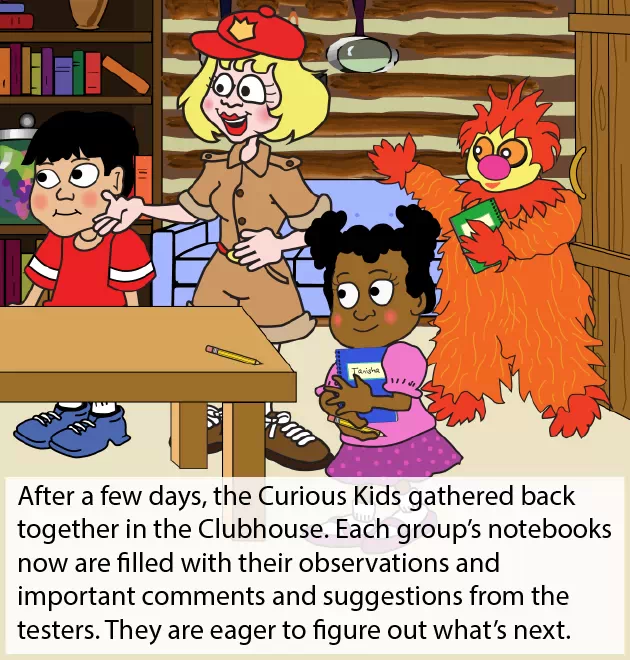
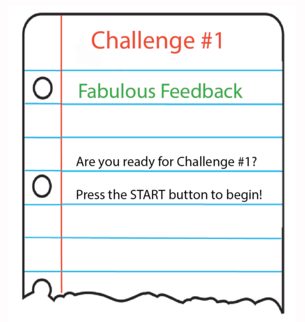
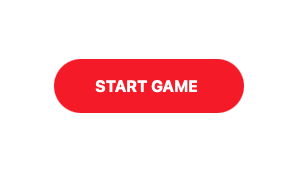 .
.
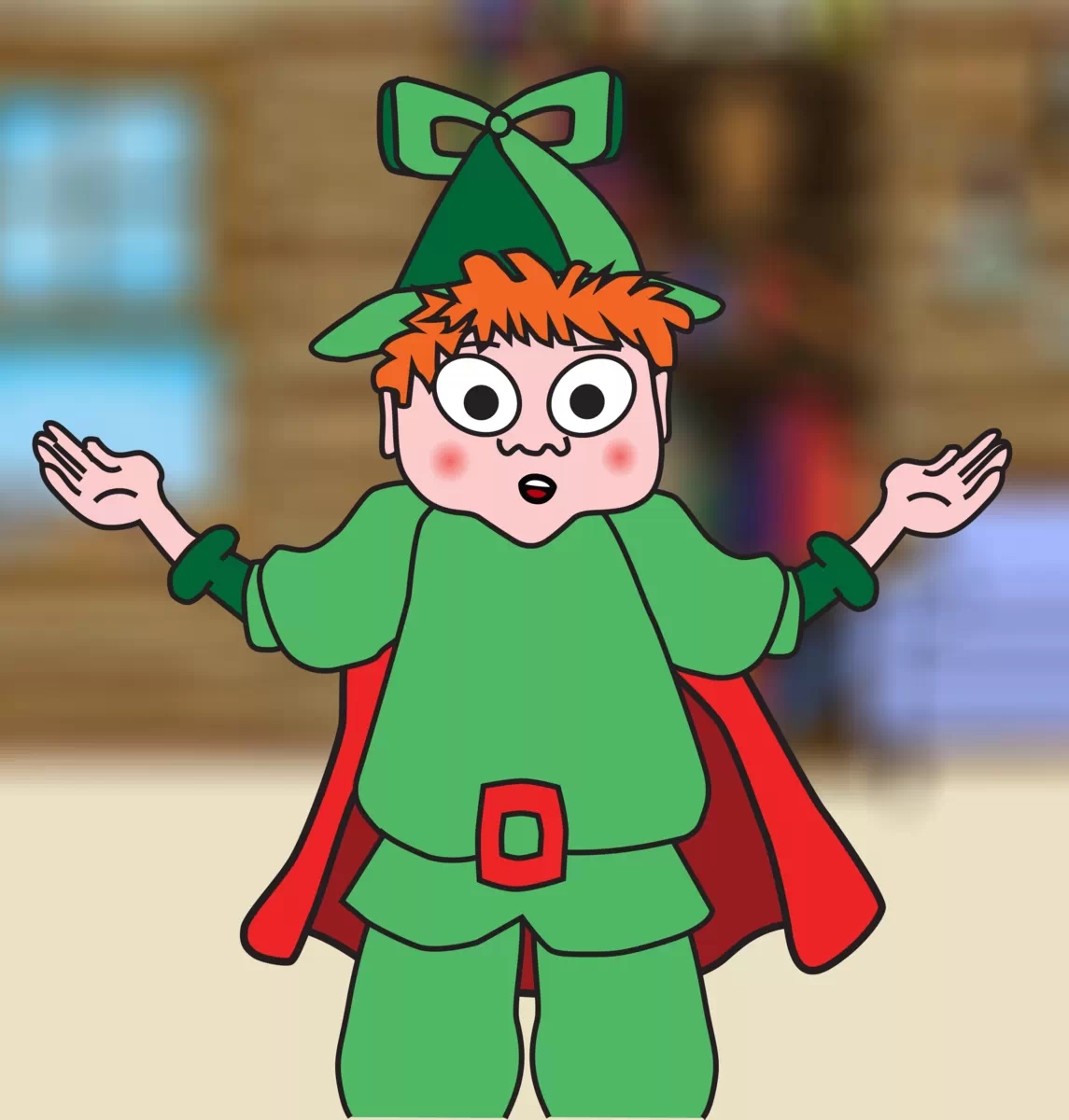
Now that the testing feedback has been categorized, the Curious Kids gather together at the Clubhouse again. Mac has joined them.
Mac says, “Now that you’ve collected some super helpful feedback about your prototypes, will you share some ways you’ve decided to improve your prototypes, based on that feedback?”
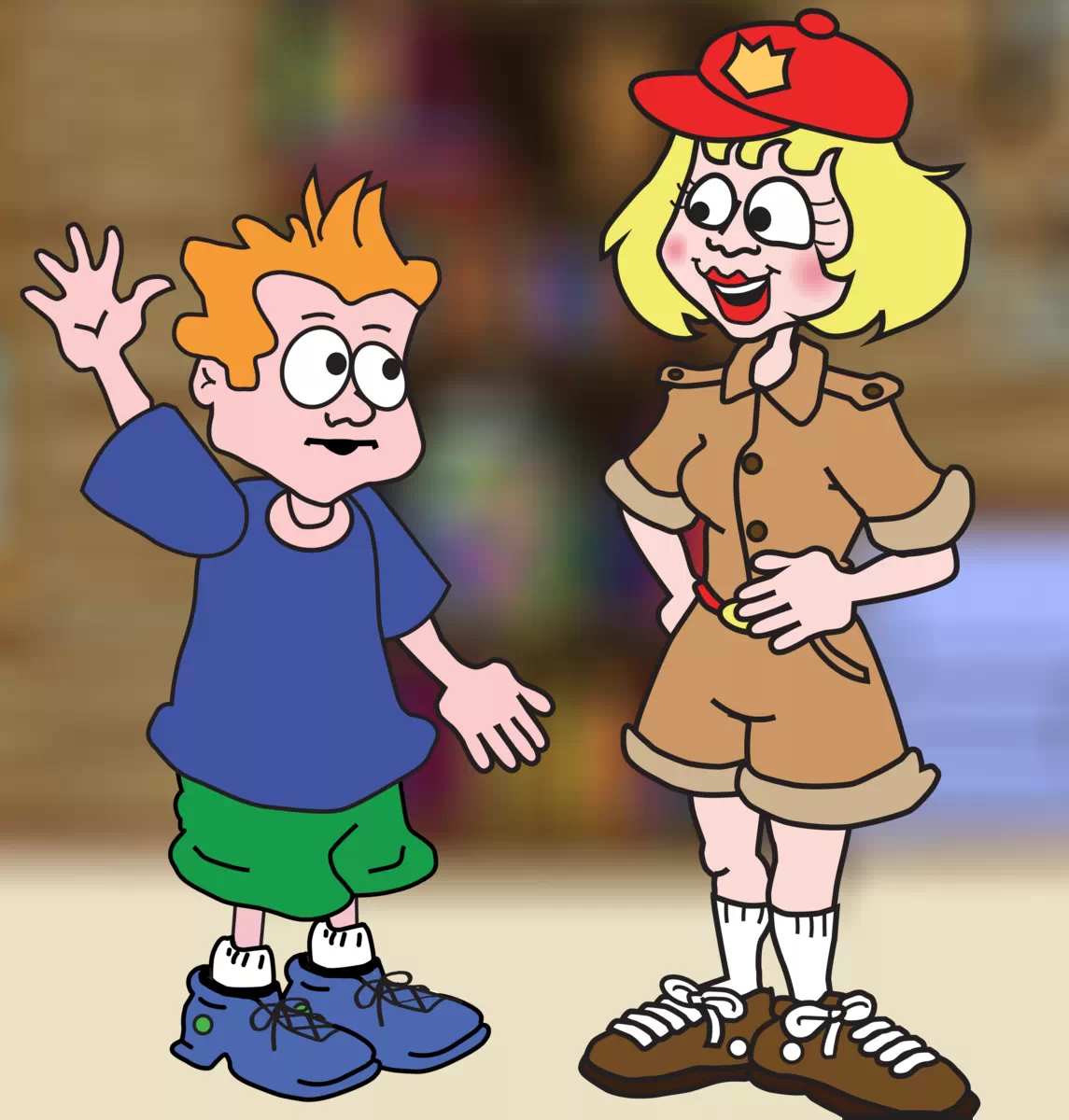
Timmy raises his hand and says, “Some important feedback I received was that my signs need to be more colorful so that people will be sure to see them. Also, I learned there was a dead tree limb hiding part of the sign."
Timmy also says that he had never even noticed it when he was placing the sign there. He wonders what he could do about that.
Mimi says, “Don’t worry, Timmy. I notified the park ranger about that broken tree limb and the limb will be taken down because it’s also a danger to anyone walking near it, if it fell down. The tree won’t be damaged and everyone should now be able to see the sign clearly.”
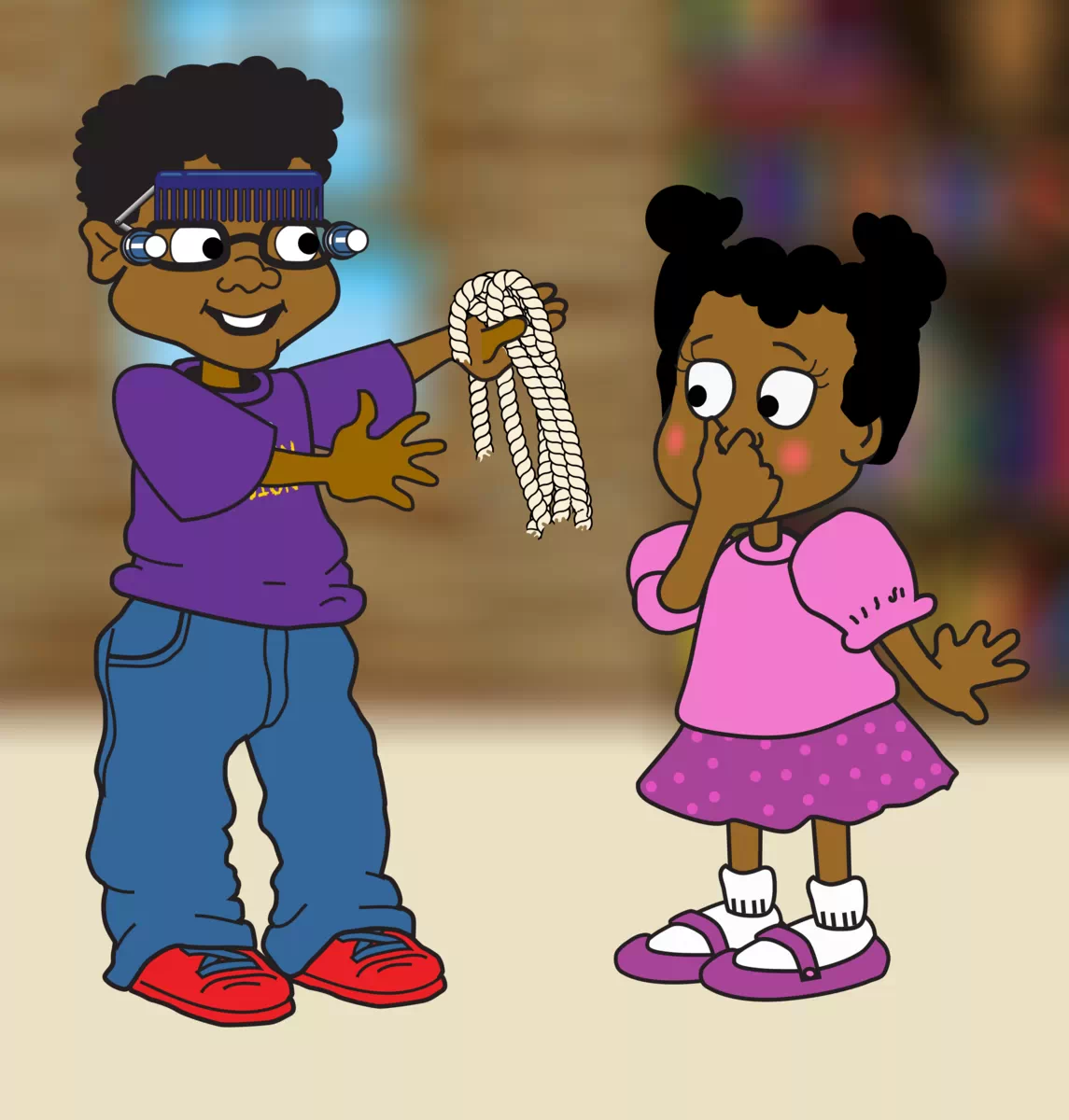
Hector jumps in next and says, “Our team decided to use the boating rope for the lid but it got chewed through by some of the animals. I guess just thickness and strength aren’t enough. We needed to use materials that couldn’t be chewed through.”
Tanisha adds, “And our team chose to use the rocks as the weights for our bin. We glued them to the bottom but the glue didn't hold them very well and they tumbled around. Some rocks were sharp and poked holes in the garbage bag. The food seeped into the spaces between each rock. When we unlocked the lid of that bin --- boy, was it STINKY!” Tanisha holds her nose.
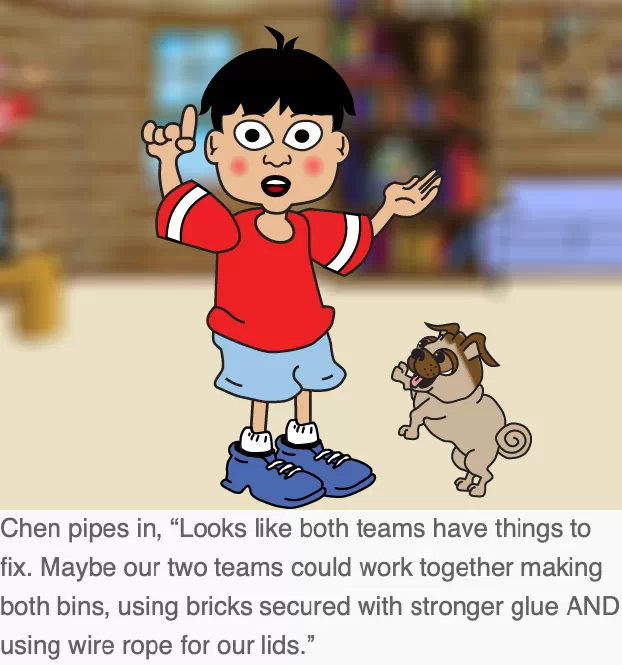
Digger lets out an excited “YEP!”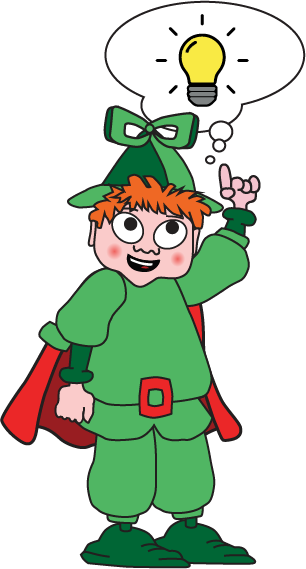
Mac says, “You all worked so hard to create your prototypes. Some of you may feel disappointed that they didn’t work perfectly. That is why making prototypes is so important; they let us find our mistakes so we can fix them. Every inventor experiences failure. The important thing is that we learn from our mistakes and try again until we turn failure into success! Did you know that it took Thomas Edison over 2,700 unsuccessful attempts before he successfully invented the light bulb?"
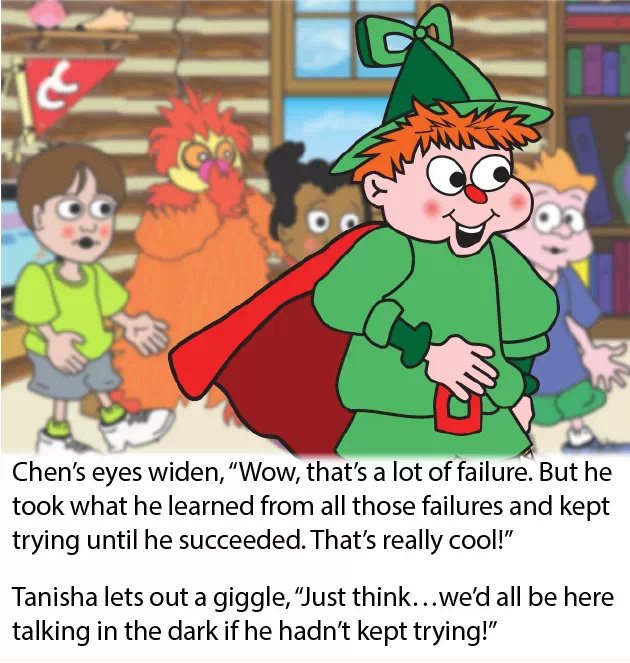
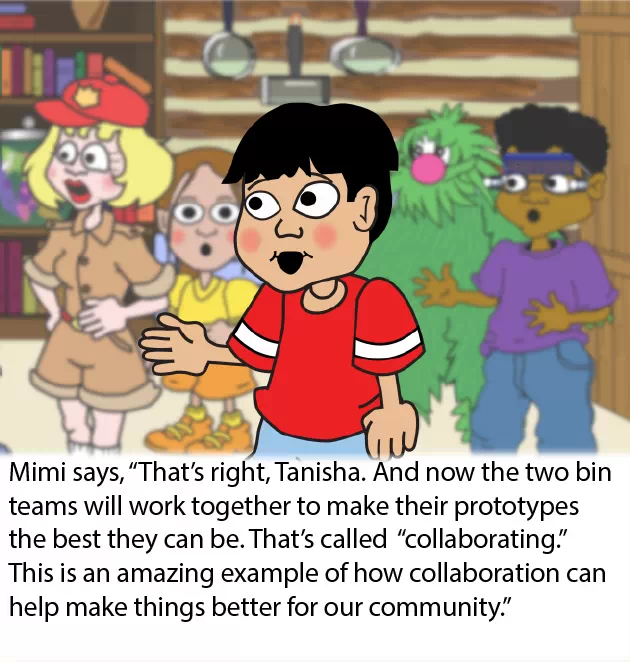
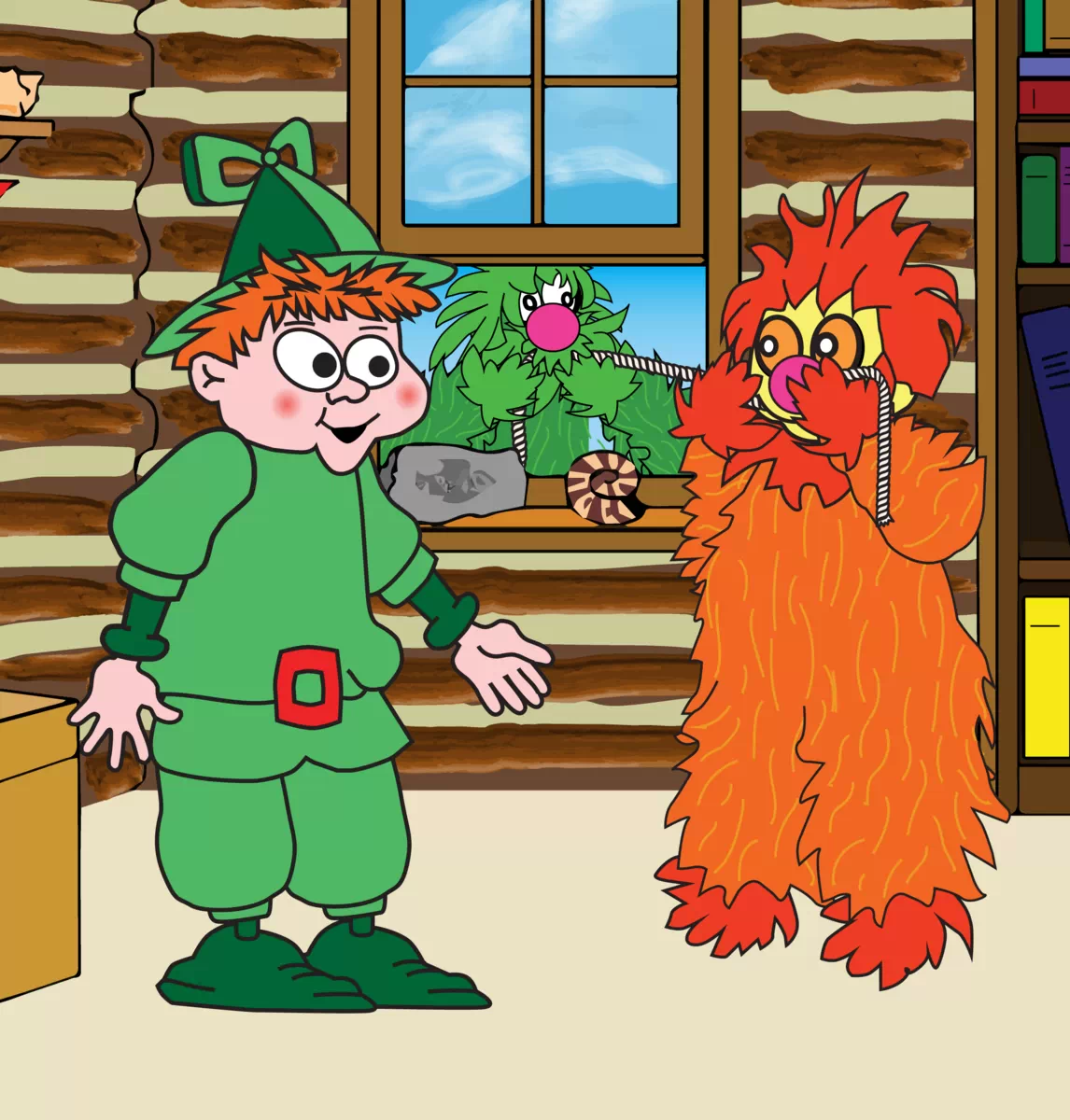
Mac continues, “And we also learned that the resources we use to help us know how to fix our mistakes must have information that is current, accurate and related to the problem. We collected information in different ways, such as observing, interviewing, and reading."
Doing good research and testing our prototypes in authentic ways with future users makes sure that we have correctly identified the problem, what caused it and, best of all, how to fix it. Mac also asked Muff and Scruff for their personal experiences, chewing on different kinds of rope.
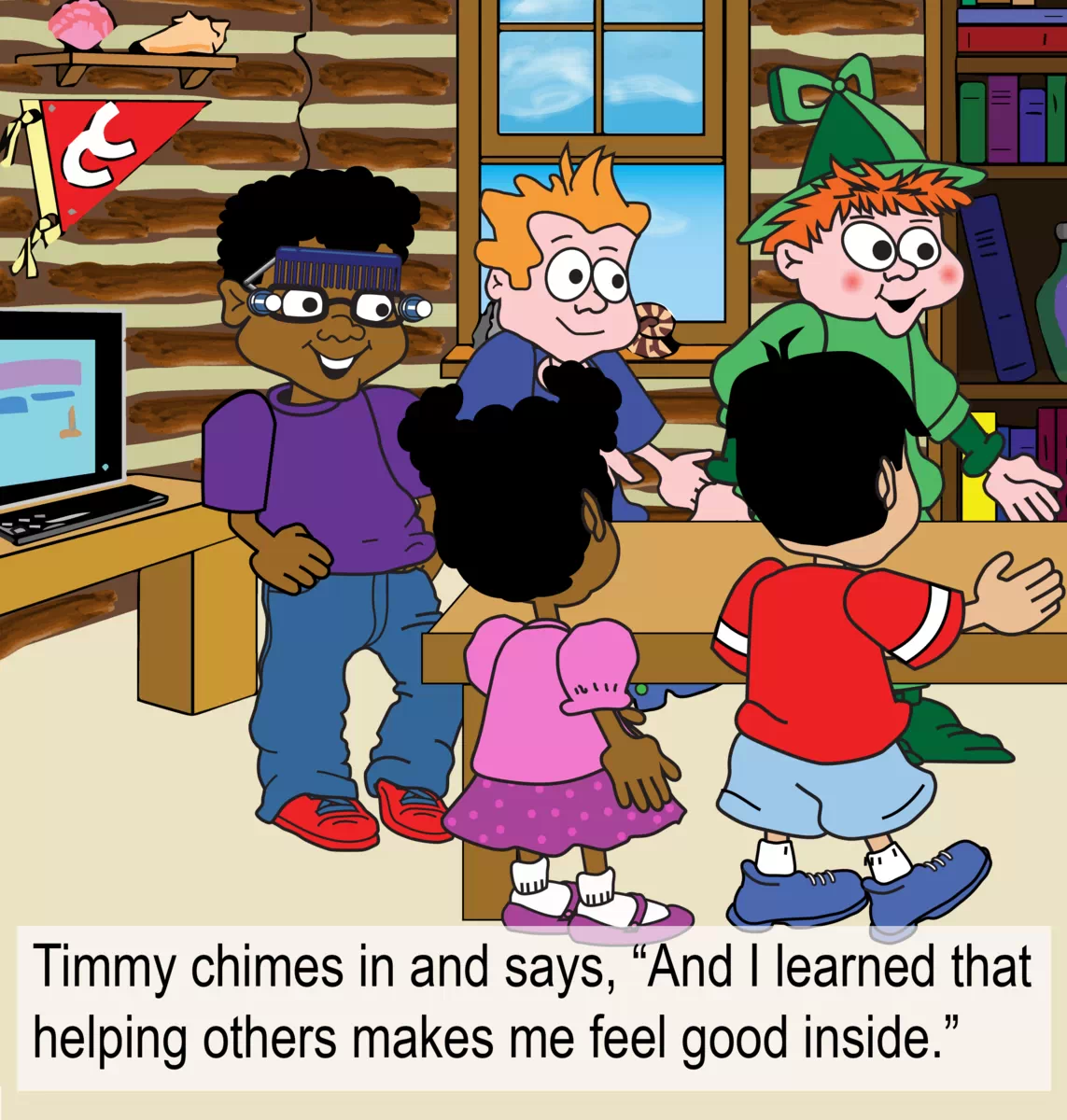
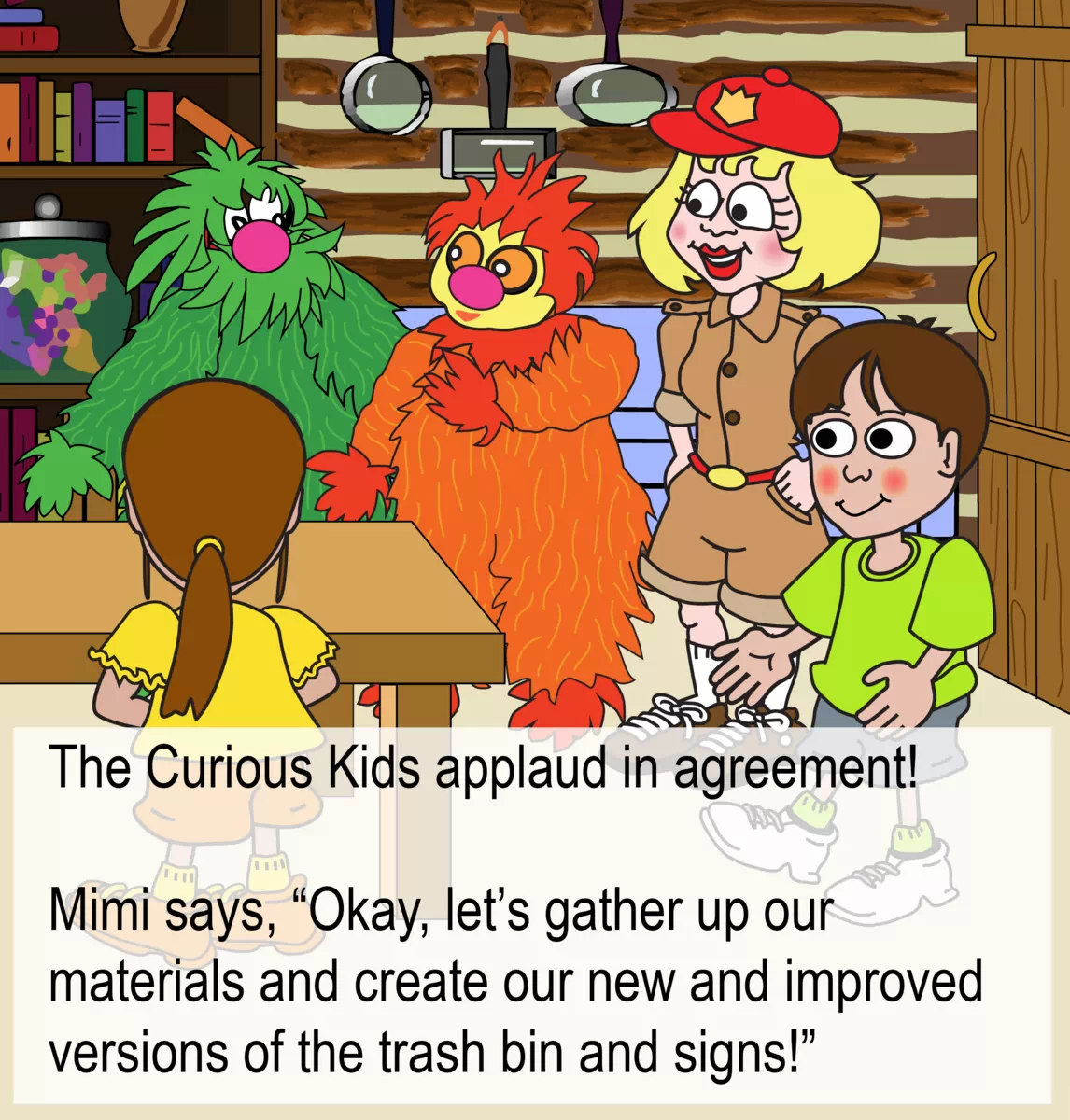
Challenge #2
Materials Mayhem
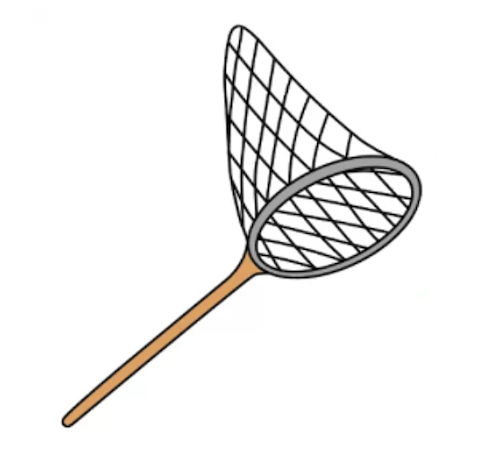

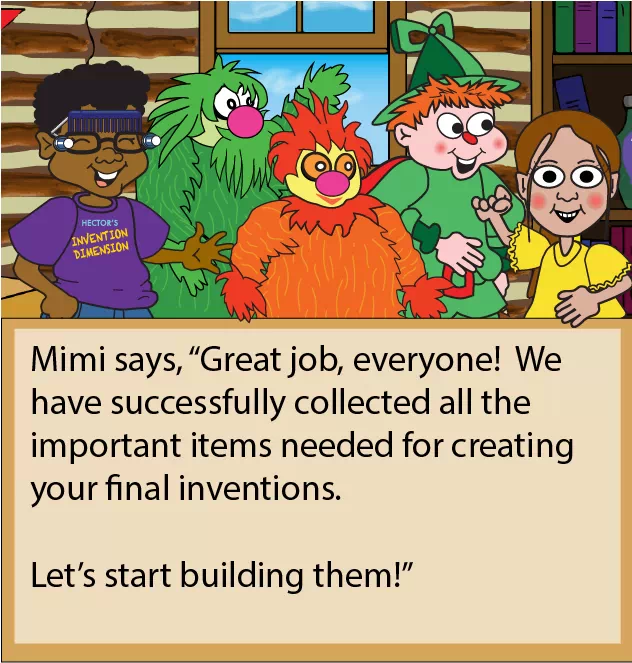
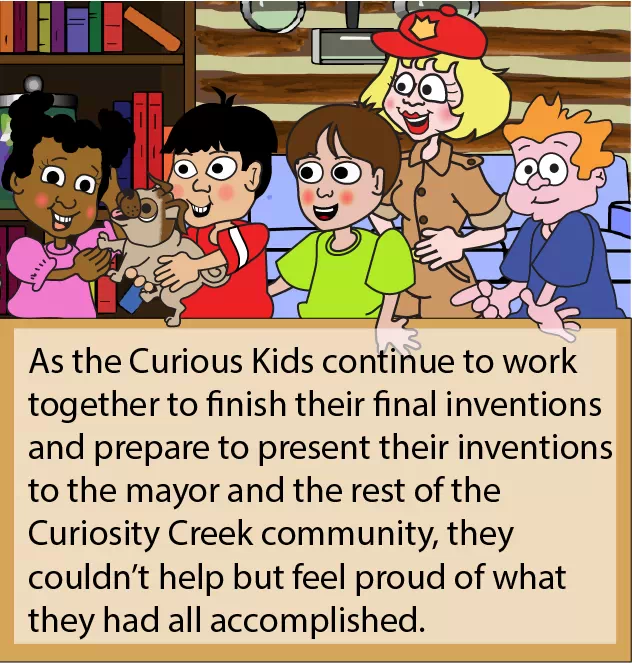
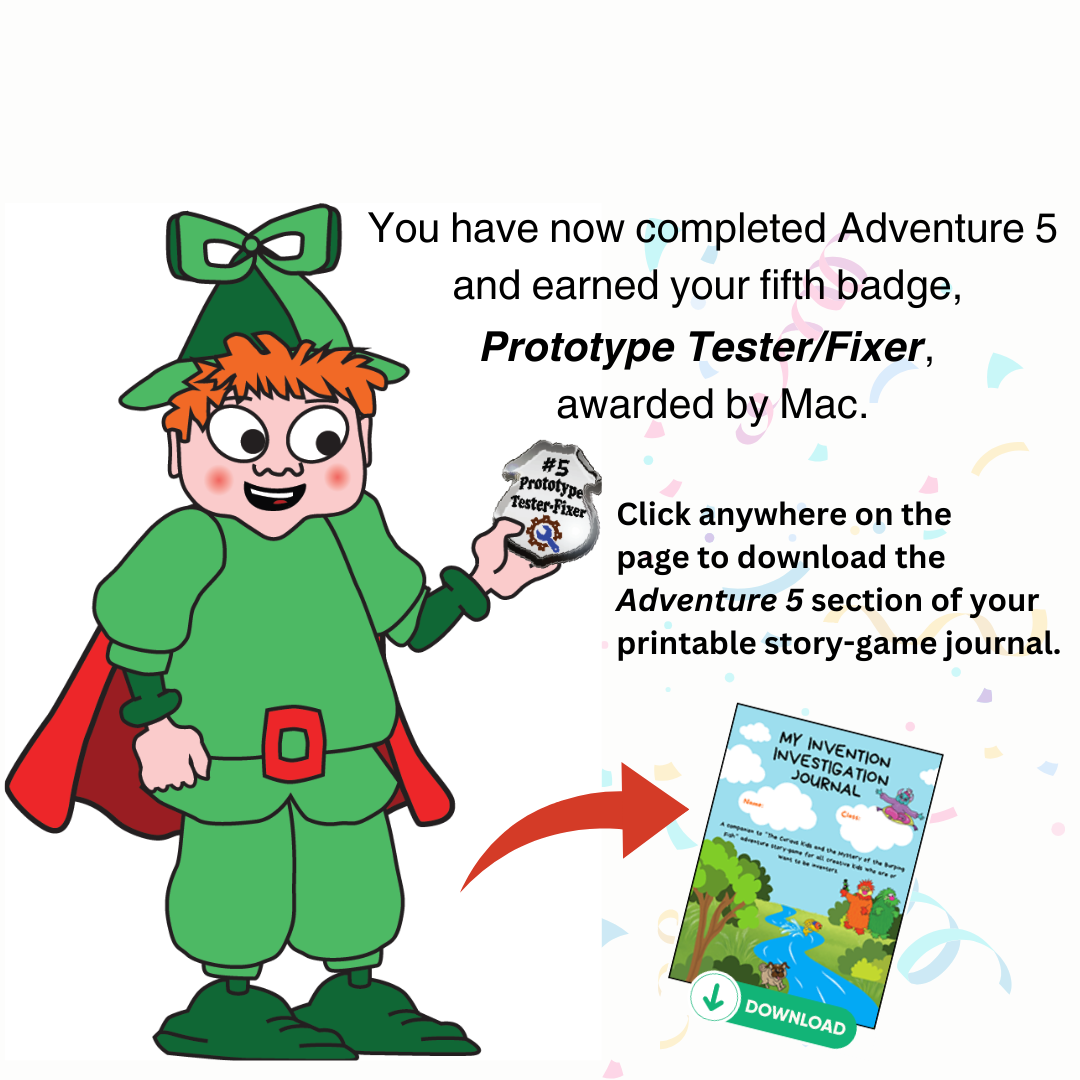
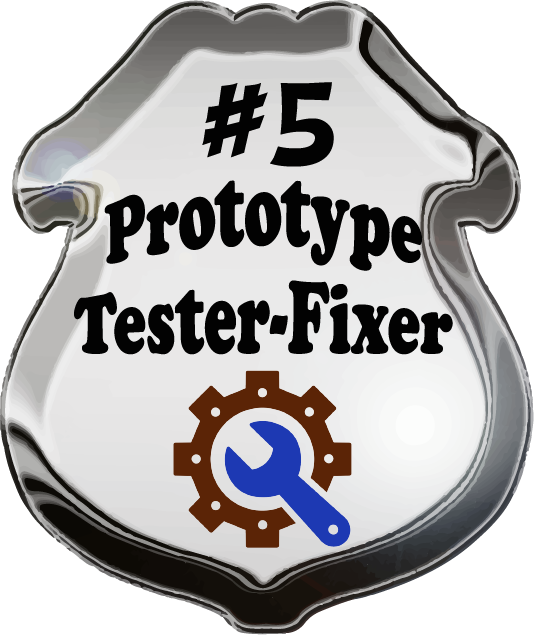
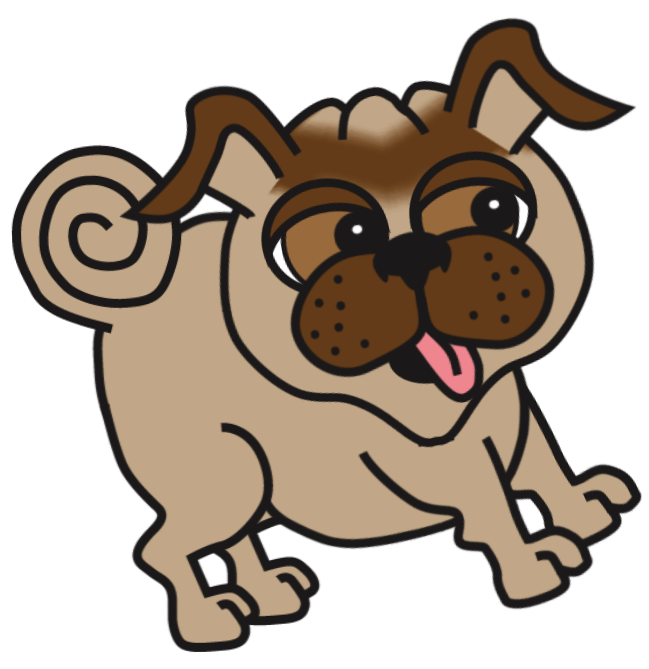 Digger’s Great Green Glossary
Digger’s Great Green Glossary